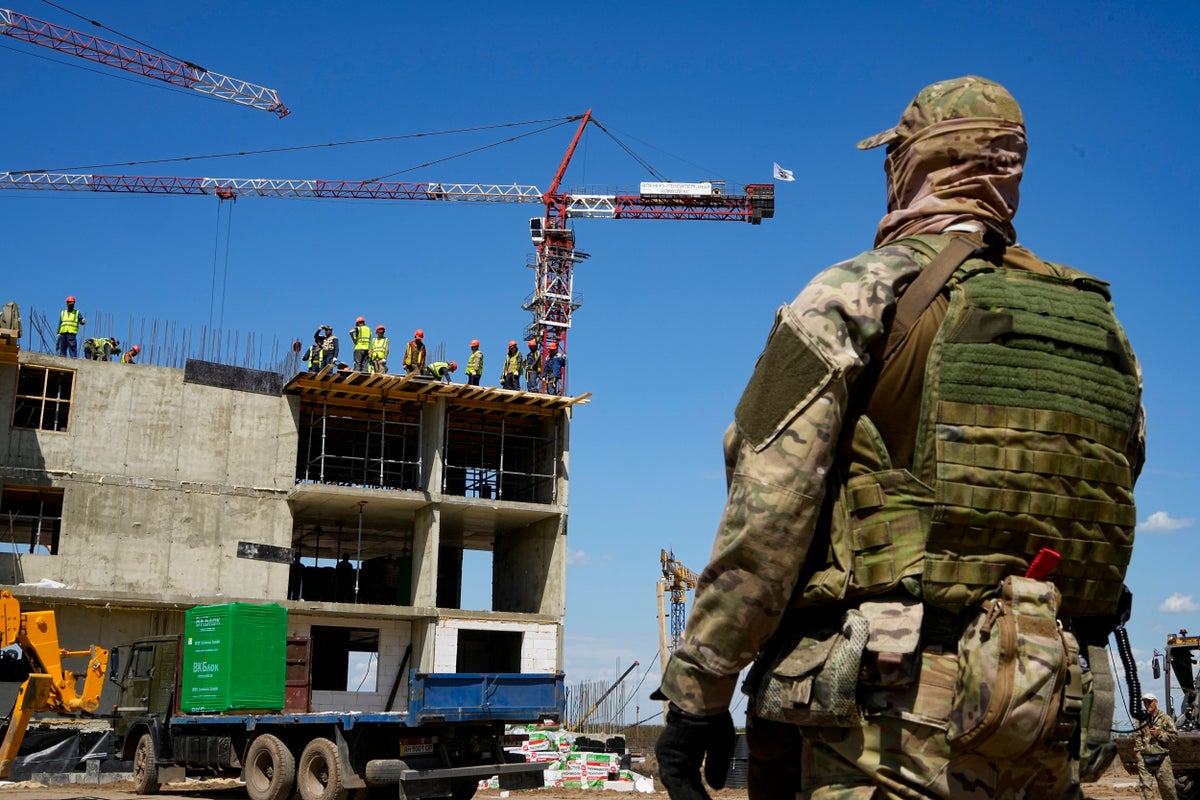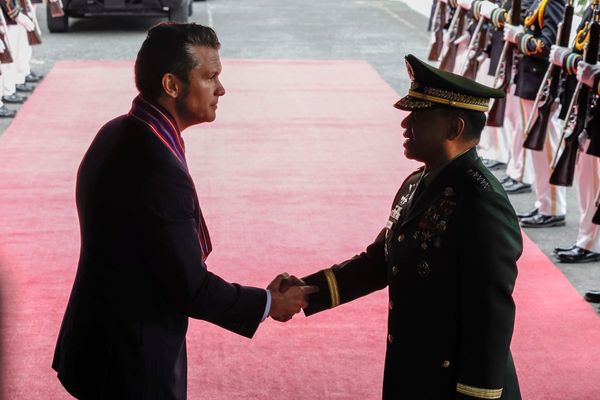
Throughout Mariupol, Russian workers are tearing down bombed-out buildings at a rate of at least one a day, hauling away shattered bodies with the debris.
Russian military convoys rumble down the broad avenues, and Russian soldiers, builders, administrators and doctors are replacing the thousands of Ukrainians who have died or left.
Eight months after Mariupol fell into Russian hands, Russia is eradicating all vestiges of Ukraine from it – along with the evidence of war crimes. The few schools still open teach a Russian curriculum, phone and television networks are Russian, the Ukrainian currency is fading away, and Mariupol is now in the Moscow time zone. On the ruins of the old Mariupol, a new Russian city is rising, with materials from at least one European company, The Associated Press found.
But the AP investigation into life in occupied Mariupol also underlines what its residents already know all too well: No matter what the Russians do, they are building upon a city of death. More than 10,000 new graves now scar Mariupol, the AP found, and the death toll might be three times higher than the government-in-exile’s early estimate of at least 25,000. The former Ukrainian city is also hollowing out, losing well over 50,000 homes, the AP calculated.
___
Associated Press journalists were the last international media in Mariupol to escape heavy shelling in March, before Russian forces took the city over. This is the story of what has happened since. AP reconnected with many people whose tragedies were captured in photos and video during the deadliest days of the Russian siege.
___
Every person the AP spoke to knew someone killed during the siege of Mariupol, which began with the Feb. 24 invasion. As many as 30 people arrive at the morgue each day in hopes of tracking down a loved one.
Lydya Erashova watched her 5-year-old son and her 7-year-old niece die after a Russian shelling in March. The family hastily buried the cousins in a yard and fled Mariupol.
They returned in July to rebury the children, only to learn that the bodies had been dug up and taken to a warehouse. As they approached the city center, each block was bleaker than the last.
Erashova, who is now in Canada, said no Russian rebuilding plan could possibly bring back what Mariupol lost.
“It’s so ridiculous and stupid. How do you restore a dead city where people were killed at every turn?” she asked.
The AP investigation drew on interviews with 30 residents from Mariupol, including 13 living under Russian occupation; satellite imagery; videos gathered from inside the city, and Russian documents showing a master plan.
Mariupol was in the crosshairs of the Kremlin from the first day of the invasion. Just 40 kilometers (25 miles) from the Russian border, the city is a port on the Sea of Azov and crucial for Russian supply lines.
The city was hit relentlessly with airstrikes and artillery, its communications severed, its food and water cut off. By the time the last Ukrainian fighters s urrendered in the Azovstal steel mill in May, Mariupol had become a symbol of resistance.
An AP analysis of satellite imagery taken over the past eight months of occupation shows 8,500 new graves in the outlying Staryi Krym cemetery, with possibly multiple bodies beneath each mound. There are at least three other trench gravesites around the city, including one created by Ukrainians at the beginning of the siege.
In all, a total at least 10,300 new graves are scattered around Mariupol, according to AP’s methodology, confirmed by three forensic pathologists. Thousands more bodies likely never even made it to the graveyard.
Back in May, the municipal government in exile estimated 25,000 people at a minimum had died. But at least three people in the city since June say the number killed is triple that or more, based on conversations with the workers documenting body collection for the Russian occupation authorities.
In a review of hundreds of photos and video clips along with documents from occupation authorities, the AP found that more than 300 buildings in Mariupol have been or are about to be demolished. Most are multistory apartment blocks, with around 180 apartments inside or more.
In all, the demolitions will remove well over 50,000 homes, according to AP calculations.
“People still live in the basements. Where they can go is unclear,” said an activist in Mariupol, who requested anonymity for fear of disappearing into Russian custody.
Russia is now moving into the historic city center. Russian authorities dismantled Mariupol’s memorial to victims of the Holodomor, the Soviet-engineered famine in the 1930s that killed millions of Ukrainians, according to video posted on Russian television. They painted over two murals commemorating victims of Russia’s 2014 attack on Ukraine.
Russia already has constructed at least 14 new apartment buildings — a small fraction of the number coming down — and is repairing at least two of the hospitals it damaged by shelling. Video obtained by the AP showed rows of pallets stacked with insulation from the Danish company Rockwool, which maintains its division in Russia despite criticism.
Rockwool’s Vice President of Communications Michael Zarin said the insulation panels were distributed without the company’s “knowledge or consent.”
Videos show no furniture visible in the windows of the new apartments and few people on the sidewalks outside. Only pensioners, the disabled and those affiliated with the occupation seem to be getting them, according to multiple people in Mariupol.
One man applied to the list in September and found himself in 11,700th place. He has friends in the 2,000 range who are still waiting, like him. And an old man he knows whose number was in the 9,000s has already moved into one of the new buildings.
However, the man said he has no issue demolishing buildings that aren’t fit to live in, and he's relaunching his own business.
But the plans for a Russian Mariupol depend on a population that simply no longer exists.
Thousands of Mariupol’s former residents were sent to Russia with little or no choice, and thousands more fled into other areas of Ukraine. Of Mariupol’s former population of around 425,000, just over a quarter stayed, according to estimates from Petro Andryushchenko, an aide to Mariupol’s mayor who is exiled in Dnipro.
The Russian master plan for Mariupol calls for a population of 212,000 in 2022, and back to 425,000 by 2030. Right now, about 15,000 of the people in Mariupol people are Russian troops, said Andryushchenko, who drew his estimate from information about the soldiers taking over homes and public buildings. He said Russian riot police now patrol to head off protests against the lack of heat, electricity and water.







